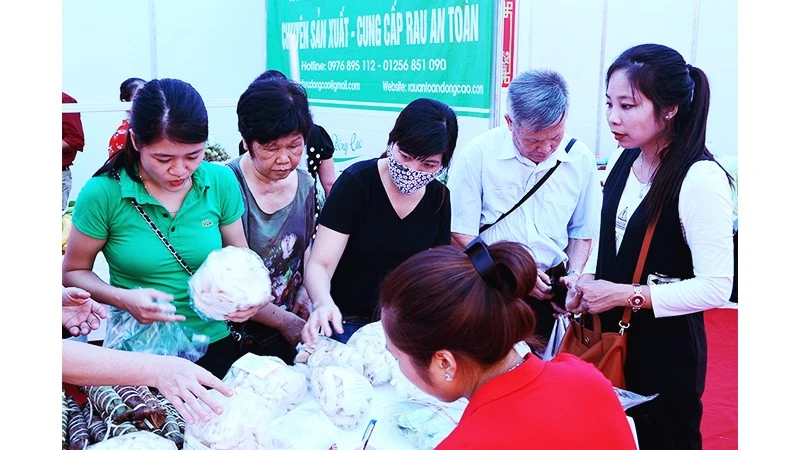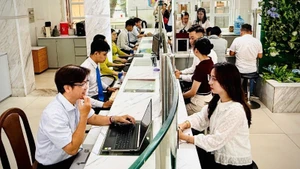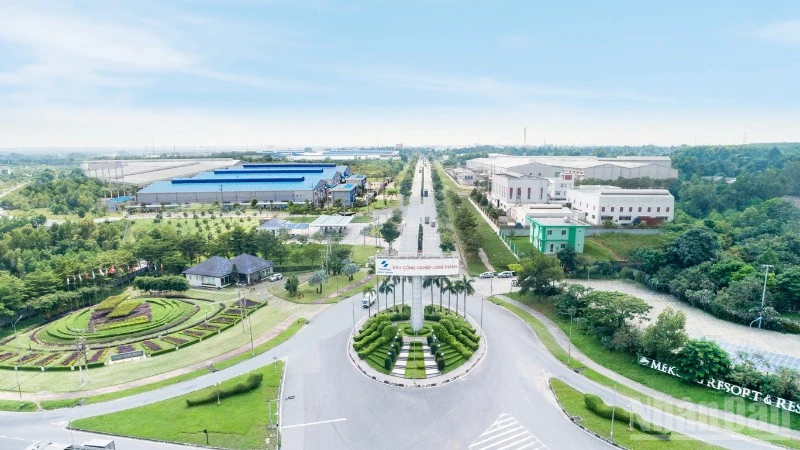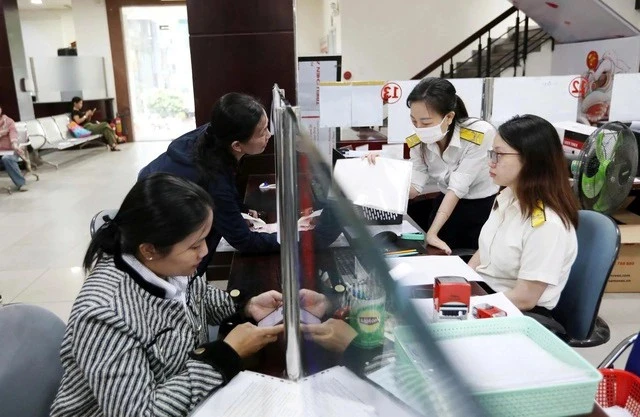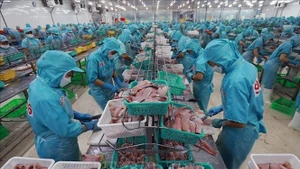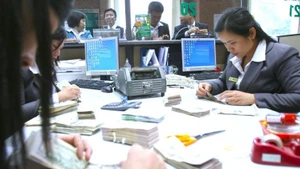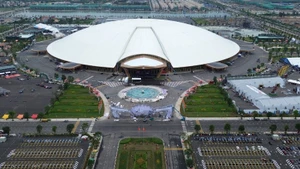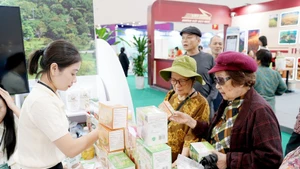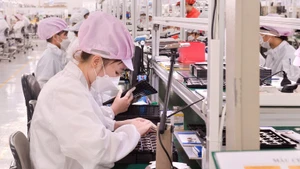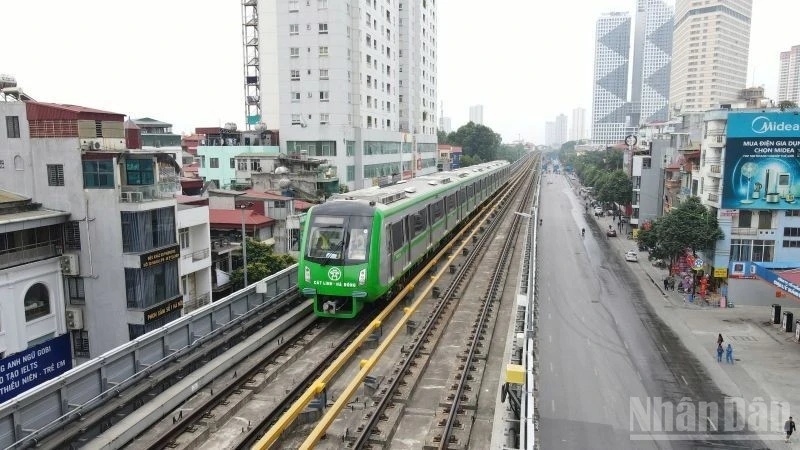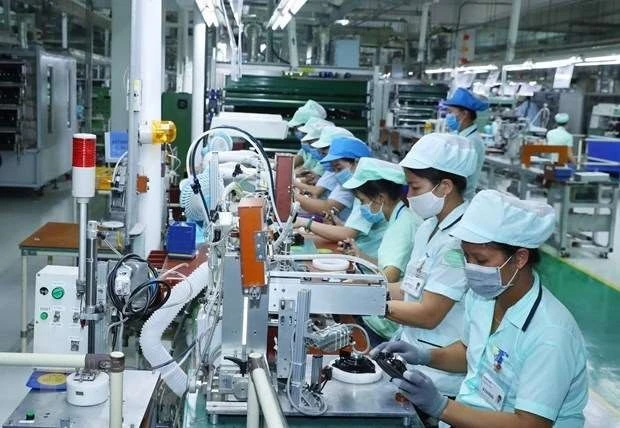According to data from the Ministry of Agriculture and Environment (MARD), the proportion of processed goods within agriculture, forestry, and fisheries has been rising, gradually replacing raw production. The application of preservation and processing technologies has helped reduce post-harvest losses by 5–10% while extending product shelf life.
Technology falling short of practical needs
Nearly a decade ago, the Institute for Regional Development Research (under the Ministry of Science and Technology) successfully partnered with Japan’s ABI Corporation to transfer the modern CAS (Cells Alive System) frozen food preservation technology to Viet Nam. This system allows fruit, seafood, and agricultural products (such as shrimp, tuna, lychees, and dragon fruit) to be stored for months while maintaining freshness.
At the time of transfer, initial research results showed great promise. For instance, black tiger shrimp could be preserved for up to nine months, tuna for two months, whole fruits such as lychees and longans for 11 months, and peeled or sliced fruits like dragon fruit and watermelon for two months—all while retaining quality.
CAS technology was seen as a potential solution to the long-standing problem of “bumper harvests leading to falling prices.” It offered farmers and producers the ability to store products until prices improved, while also helping Vietnamese agricultural and seafood products gain access to premium markets such as Japan, the US, and Europe.
However, nearly 10 years on, this technology has all but disappeared from discussions. Explaining this “vanishing act,” a researcher from the Institute noted that a high-cost model like CAS (1–3 million USD per system) was unsuitable for smallholders and cooperatives. It could only be adopted by mid-sized enterprises and above, while the payback period remained long and risky.
“We researched CAS technology for various product lines, but faced many challenges in technology transfer. One of the main reasons CAS could not be widely applied in Viet Nam was the concern over capital recovery, given its very high cost,” the researcher explained.
CAS is not a new story in Viet Nam. According to experts, one of the barriers preventing post-harvest preservation and processing technologies from meeting demand is the limited scale of investment capital.
Enterprises are reluctant to invest in expensive, unproven technologies without government support.
In addition, advanced technologies require raw materials that meet strict standards, whereas Vietnamese agricultural production remains largely small-scale and fragmented.
Although research into post-harvest preservation technology has received growing attention for years, in practice there have been few projects or products that adequately meet market needs. Most are held back at the stage of commercialisation due to a lack of funding.
Moreover, the transfer and adaptation of technology require considerable time for decoding and localising processes, as well as the design and fabrication of certain equipment components, in order to ensure practical and effective application.
According to the Food and Agriculture Organisation (FAO) under the United Nations: Each year, more than 10% of global food is lost in the supply chain before reaching consumers. Even once food has entered households, restaurants, and catering services, over 1 billion tonnes continue to be wasted worldwide.
Comprehensive solutions needed
Speaking on possible solutions, Associate Professor Dr Ta Thi Thu Thuy, Director of the Institute of Biotechnology and Food Technology at Ha Noi Open University, said that close collaboration with businesses is the most effective way to drive research and technology transfer in food processing and preservation.
This approach not only improves product quality but also secures stable funding for research institutions, while ensuring that research topics are closely aligned with practical needs and easily applicable in production.
“The demand for processing agricultural products is enormous. Every year, every quarter, and every month, businesses come to us for collaboration. We have already signed partnerships with more than 20 companies to develop their product lines and accompany them in the process,” Dr Thuy shared.
Experts agree that efforts by scientists and businesses alone are not enough. To encourage companies engaged in agricultural and seafood processing and exports to adopt more technology, investment and supportive policies from the State are needed to ensure consistency across the entire value chain.
In the short term, it is necessary to simplify import-export legal procedures and provide preferential credit packages to help enterprises modernise their technologies, thereby facilitating smoother production, processing, and export.
Dr Thuy further noted that Viet Nam cannot stop at simple preservation and processing technologies; instead, it must push towards advanced processing and modern preservation solutions.
“As the country advances towards industrialisation, modernisation, and scientific progress, the demand for processing and product quality will only increase. Technology must therefore keep pace and respond more effectively to real-world requirements,” she said.
Deputy Minister of Agriculture and Environment Phung Duc Tien added that, given Viet Nam’s conditions, adopting advanced technologies from around the world requires clarity on where the products will be applied, on what scale, who will use them, and how the market will respond. These questions, he stressed, must be thoroughly answered.
He emphasised that to achieve the target of 70 billion USD in agricultural export value, post-harvest preservation and processing technologies are indispensable. For this reason, the Ministry will establish agricultural innovation centres in different regions, strengthen linkages between research institutes, universities, and enterprises, and expand international cooperation - particularly in advanced processing, logistics, and smart mechanisation - to raise the value and competitiveness of Vietnamese agricultural products.
